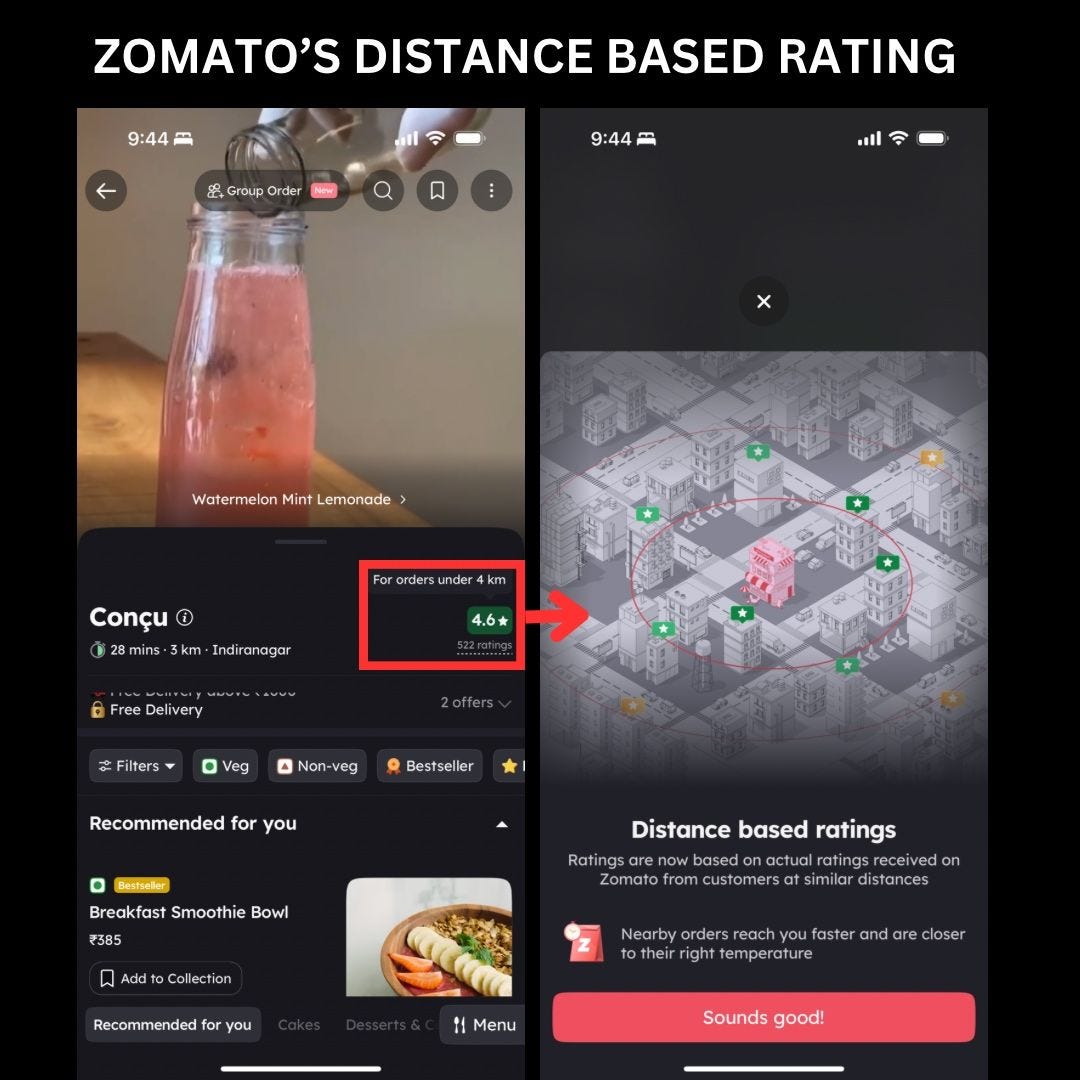Zomato's Game-Changer: Distance-Based Ratings for a Fresher Food Delivery Experience
Zomato has recently introduced a new ratings classification system that takes distance into account, marking a significant shift in how restaurant ratings are perceived and utilized. This innovative approach aims to enhance user experience by providing a more nuanced understanding of how distance affects food delivery quality.
Key Features of the New Rating System
Distance-Based Classification: Zomato has categorized ratings based on distance ranges—0-4 km, 4-7 km, and over 7 km. This allows users to see how ratings vary with distance, which is crucial since food freshness can significantly decline over longer delivery distances.
For instance, Meghana’s Biriyani has a rating of 4.4 for deliveries within 4 km, compared to 4.1 for those over 7 km.
Understanding User Personas: The new system acknowledges that different users have varying expectations based on their backgrounds and experiences. For example, a connoisseur may rate a high-end restaurant like Jamie Oliver’s differently than a casual diner who finds it overpriced. This differentiation helps in understanding the ratings better and tailoring user experiences accordingly.
Impact of Time of Day: The system also considers the time of day, recognizing that traffic conditions can affect delivery times, especially in busy cities like Bengaluru. This factor can lead to longer delivery times even for short distances, influencing customer satisfaction and ratings.
Freshness of Ratings: Ratings may not always reflect the current quality of a restaurant. A restaurant that was once popular may suffer from declining service, and the new system aims to ensure that ratings reflect more recent experiences rather than outdated perceptions.
Implications for Users and Restaurants
This new rating system is particularly beneficial for users who are early in their customer journey. By providing clearer insights into how distance affects food quality, Zomato helps users make informed choices, potentially reducing the likelihood of poor delivery experiences. Users who order from restaurants with higher ratings are more likely to have positive experiences, leading to repeat orders.
For restaurants, this system could lead to improved ratings over time, as it encourages them to focus on maintaining quality within their delivery radius. It also emphasizes the importance of customer feedback, as restaurants that adapt to these insights can enhance their service and food quality, ultimately benefiting their ratings and customer loyalty.
Conclusion
Zomato’s new ratings classification based on distance is a thoughtful enhancement that reflects a deeper understanding of the factors influencing customer satisfaction. By addressing distance, user personas, time of day, and the freshness of ratings, Zomato is not only improving its platform but also fostering a better dining experience for its users. This data-driven approach is a commendable step towards refining how restaurant ratings are perceived and utilized in the food delivery landscape.





